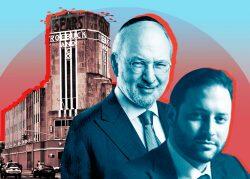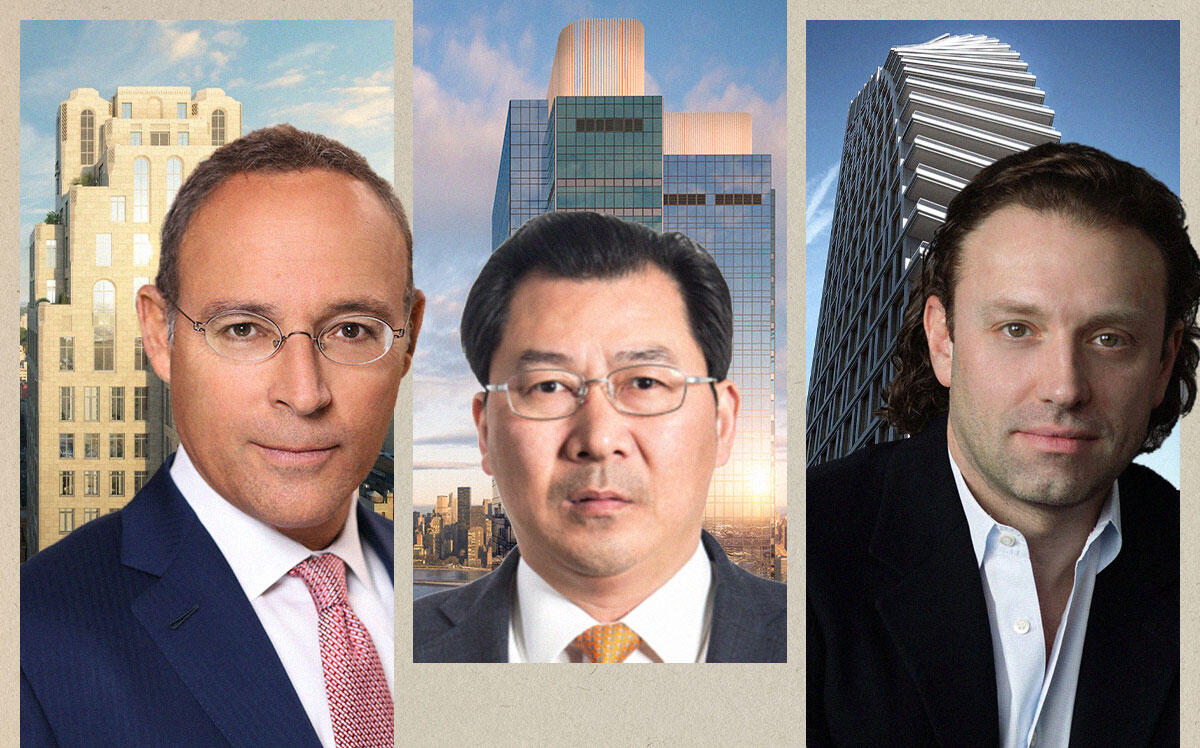 Bistricer plans 650 units at landmarked Sears in Flatbush
Bistricer plans 650 units at landmarked Sears in Flatbush
Trending
NYC new development sales stay hot, but prices show signs of stabilizing
Nearly 1,200 contracts were signed for sponsor units in Q1, the city’s third-busiest quarter since 2015

Steroids, a rocket ship or a magic beanstalk — whichever metaphor you choose to describe New York’s hot new development market, it just keeps on climbing.
Sales of new development condos in the city just posted their strongest first quarter — and third-most-active quarter overall — since at least 2015, according to a new report from Marketproof. Developers in Manhattan, Brooklyn and Queens reported 1,178 contracts signed for sponsor units in the year’s opening months, asking a combined $2.9 billion.
Buyers remained busy in March, though price increases showed signs of leveling off after months of gains. Developers inked 461 contracts worth $1.1 billion last month. The median unit sold for $1.61 million, or $1,641 per square foot.
While the median unit price has risen 25 percent since March 2021, it remained relatively unchanged compared to February — a short time to infer anything approaching a trend, but a possible sign that prices are stabilizing as mortgage rates rise.
Marketproof CEO Kael Goodman cautioned that prices still haven’t reached the astronomical levels of growth seen in some Sun Belt cities. And while rates continue to climb, Goodman said he has not seen any signs that they’ve hit the new development market just yet.
Manhattan had the hottest March, with a 32 percent leap in deal volume compared to February, more than double the 15 percent increase observed across the three boroughs covered in the report.
Major penthouse sales on the Upper East Side led the way, like a six-bedroom penthouse at Naftali Group and Rockefeller Group’s 200 East 83rd Street that was last asking $32.5 million.
Sales outpaced supply in the first quarter, as offering plans were accepted on 46 new developments totaling 725 units, while 1,178 units went into contract. That said, about 12,500 new development condos remain on the market, compared to 3,500 resales.
The top-performing building in the quarter in terms of sales velocity was the 800-unit Skyline Tower in Queens, a coup for the third-borough skyscraper, which averaged 14.3 sales per month. Sales at Queens’ tallest tower, developed by Chris Jiashu Xu, launched last March.
Manhattan new developments reported 231 contracts in March totaling $774 million, essentially the same deal and price volumes the borough saw a year ago. There were bright spots for projects that have spent years struggling to sell out, as inventory gets ever thinner.
The Cast Iron House in Tribeca, a 19th-century industrial building converted into luxury lofts, finally sold a $15 million penthouse that had been on the market since 2014. And the Fitzroy, developed by Michael Stern’s JDS Development Group, closed on a $15 million unit that had spent six years on the market.
Extell Development’s Central Park Tower closed two sales for $18.4 million each, one of which represented an 18 percent discount.
In Brooklyn, the median unit price rose 40 percent year over year, but fell slightly compared to February. The 196 contracts signed mark a slight increase from last year.
Read more
 Bistricer plans 650 units at landmarked Sears in Flatbush
Bistricer plans 650 units at landmarked Sears in Flatbush
 Tal Alexander tapped to sell long-delayed new development condo in Noho
Tal Alexander tapped to sell long-delayed new development condo in Noho
Fortis Property Group’s Olympia Dumbo at 30 Front Street signed each of the top four contracts in the borough, last asking a combined $28.5 million before closing — nearly 10 percent of the borough’s overall dollar volume for the quarter. The development is 21 percent sold since launching sales six months ago, according to Marketproof.
Queens was the only borough to experience a decline in contract activity from February, and it was a big one at that: The borough’s new developments reported just 34 sponsor contracts, a 28 percent dip from February and a nearly 50 percent decrease from a year ago. But in a market like Queens, where a few projects tend to drive the bulk of new development activity, an off-month for one key building could account for such a seemingly precipitous drop.
Despite slowing price growth and thinning inventory, challenging macroeconomic conditions might not be strong enough to stop the engine, according to Goodman.
“These external factors like interest rates and wars,” he said, ”they’re not touching us yet.”




